Every day we compulsively share every minute detail of anything which could be deemed remotely interesting that comes smashing into our retina as we frolic out and about playing the game of who can not die the longest. We frantically tap to convert these experiences into binary code and radio frequencies sent flying over the interweb in time to hit the lunch break rush, impressing hoards of followers swiping their snapchat and twitter timelines saturated with updates of how fun and hilarious our day has been. #relate. We are a people conditioned through smartphones with double tap short cuts and long pressed home buttons, to open the camera quick enough to capture a minor celebrity doing whatever new dance trend is viral at the time in an attempt to become relevent  again. Sure this sharing obsession has seen the human race transcend into a golden age of memerey we have been blessed with the past couple of years. However, not every snap is a *dank* meme (or a cute breaded sheeb) meaning there is a lot of other blurry distastefully cropped grams clogging my social feeds, which I am not OK with. I don’t have a problem with the odd facebook post or twitter pic that looks like its been shot on a Nokia potato-4000, so long as said photo contains a context to make the pixelated effort of a vegetable worthy my precious attention. Furthermore, to achieve expansion of your content, a possible retweet, maybe even some double tap love, gimme some good colour and decent resolution.
again. Sure this sharing obsession has seen the human race transcend into a golden age of memerey we have been blessed with the past couple of years. However, not every snap is a *dank* meme (or a cute breaded sheeb) meaning there is a lot of other blurry distastefully cropped grams clogging my social feeds, which I am not OK with. I don’t have a problem with the odd facebook post or twitter pic that looks like its been shot on a Nokia potato-4000, so long as said photo contains a context to make the pixelated effort of a vegetable worthy my precious attention. Furthermore, to achieve expansion of your content, a possible retweet, maybe even some double tap love, gimme some good colour and decent resolution.
Luckily such a contemporary qualm has not slipped under the designer spectacled nostrils of the Silicon Valley elite (queue very tenuous camera review blog post link). The prize of the most capable smartphone camera on the market is the subject of heated debate among tech journalists and OS fanboy collectives alike. For a long time – to be honest ever since the iPhone iSight cameras of the 4/4s – Apple had lead theway in the fight for pocket photography superiority, with Sony, Samsung and Nokia always coming up short against the Cupertino giant. Some OEMs tried different approaches of attatching phones to cameras such as the Samsung S4 Zoom, or cameras to phones like the Nokia Lumia 1020 to mention two notable, albeit not the most commercially successful efforts.

Sony used their imaging prowess from their DSLR, mirrorless and compact camera lines while devices such as the recent Huawei P9 teamed up with Leica to try and find a usp with their take on phone photography. The two latest generations of Samsung Galaxy devices have been regarded by a significant majority to have stolen the photography crown from Apple. Having owned an S6 for a wee while, I can confidently second that view. Nevertheless the playing field has never been so open, with plenty of room for newcomers to jump in and undercut the competition with a smart camera for an even smarter price. Can you see where this is going? Lets have a look at how the OnePlus 3 stacks up to the competition.
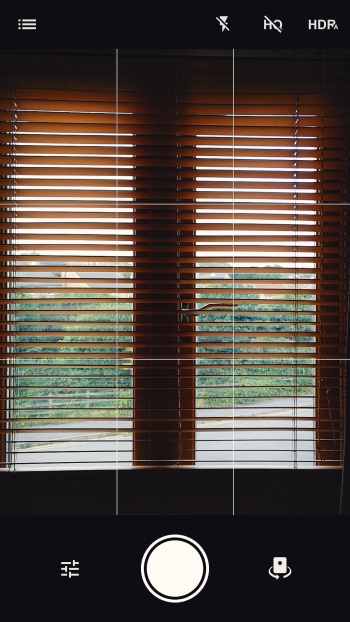
For 2016 OnePlus packed a 16 megapixel camera on the back with f/2.0. Plenty of megapixels means that image detail will remain sharper if you decide to crop or zoom, than on the 12MP of the S7 and current gen iPhones. The large (but not the largest on the market) 2.0 apeture will enable you to shoot lush blurred out backgrounds for properly composed macro or close up shots. It has hardware image stabilisation as well as fancy software stabalising tricks, gives you the option to oggle HD and HDR modes, along with all the other usual suspects in camera settings. All the modes you would expect are here too, as well as the ability to shoot RAW in the manual camera mode – something that was particularly important to me when choosing this phone – and the option to record video at 4K. All pretty fancy stuff despite the price tag being sub £200-300 of the flagship competition.
So how does it stack up?
Daylight/Good Lighting Conditions
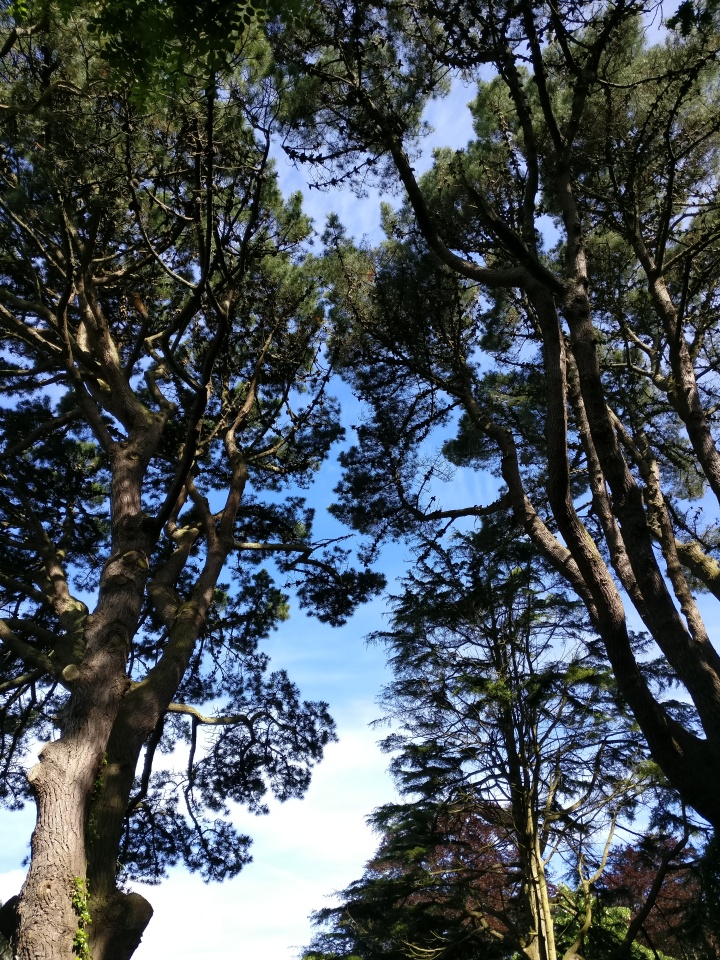

You can turn some good images into great ones (if I do say so myself) by hopping into a post processing app to pump up the contrast and bring up the saturation in the images, especially since the OnePlus shoots in RAW format. Here I used the filters and editing tools on the app VSCOcam. The HD screen is sharp and has great colour accuracy for tweaking the images.
HDR vs HD
Which Should You Use And When?
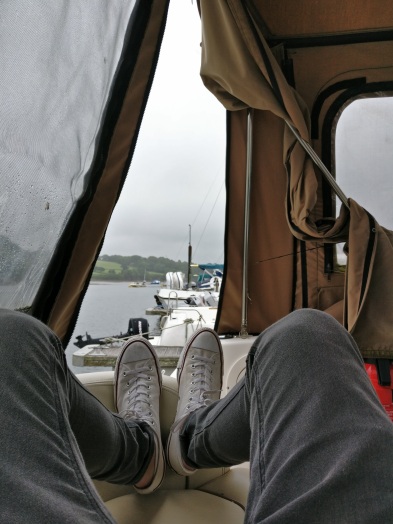
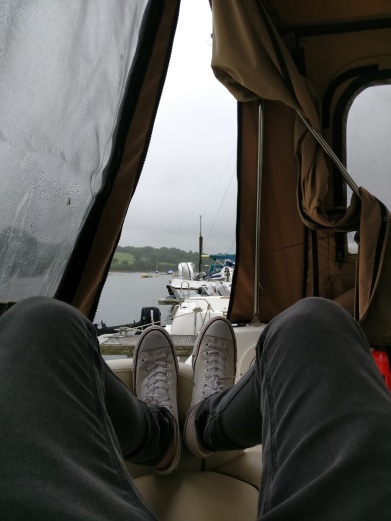
Here is a photo from when I was down the boat in Penryn on a disappointingly wet Sunday, taken twice using the two different modes in auto. HDR is on in auto by default. This mode quickly snaps three photos at three different exposures and merges them into one image which is the one that you see when you scroll across to the gallery. The HDR image reveals details in the shadows giving you a more lifelike representation of the scene than the HD photo, which is darker as it is shot at only the one exposure that you set before taking the photo. What we can see is that the HD image has increased the sharpness of the artifacts in the image. Focus on the detail of the lace holes of the Converse, the rain drops on the left cover window and the teeth of the zip on the covers. They are pin sharp, whereas on the HDR image these details are slightly softened to compensate for the extra light.
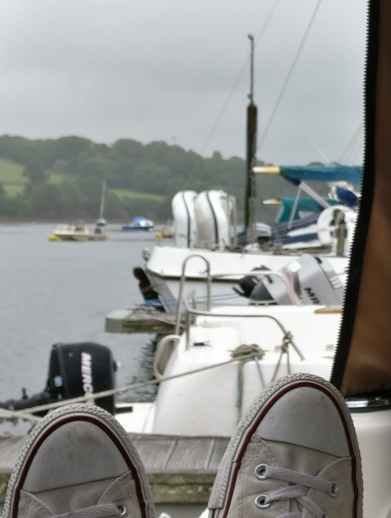
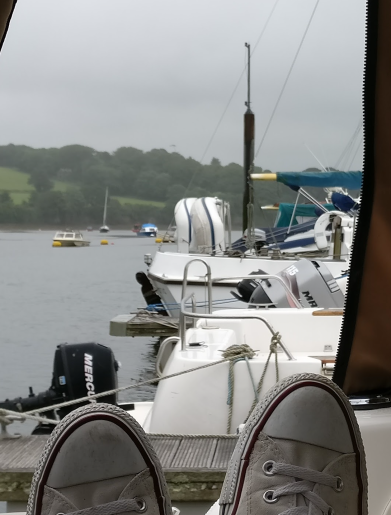
Moreover, there is more of a boka effect on the HDR image which can be seen in the crop where the decking and boats in the backgroud are softly focused. On the other hand the HD image keeps these details crisper. In conclusion, when comparing these two images shooting in the HDR mode is more preferrable because of its multiple exposures that brightens up the details in the shadows that would otherwise have be lost in HD mode. Hope that makes sense!

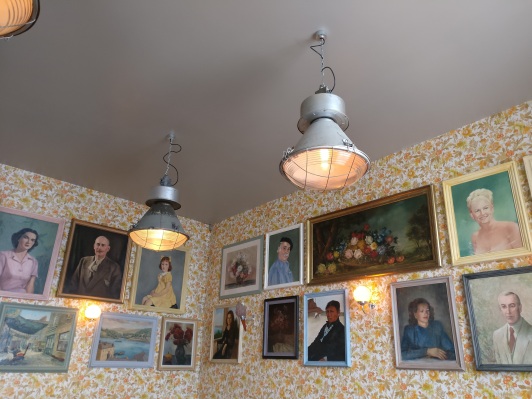
Conversely, in these next two images, again one taken in HDR, the other in HD – both in auto – the HD image comes out the better. Indoors under artificial lighting in a well lit room, the HDR image blows out the ceiling lights and the silver of its metal lampshade. In a scene with a ton of different focal points with the busy wallpaper and intricate portrait paintings, the HD mode can be utilised to capture all the competing patterns keeping them sharp. We can also see some strange blue shades in the grain on the ceiling and some orange of the lower lamp to the left of the HDR image, which is not as prominant on the HD image. From these examples and other shots I have taken, it seems HD is best used under good lighting conditions or where you want the image to be sharper with more detail. HDR is best used where there is a…high dynamic range…of different highlights and shadows in the same frame to balance out the image exposure. Again I hope my analysis makes sense! I’m really happy with the quality of all these images as a point and shoot camera on a phone. Check out my Instagram of the Pilacio Lounge picture, I used the VSCOcam app for the edit, in which I have been a bit too keen with spending money on extra picture filters…oops! Again, no harm in a quick edit. Images hold up really well across the board with post processing looking really good.
Low Light – Can It Handle The Nocturnal Shots?
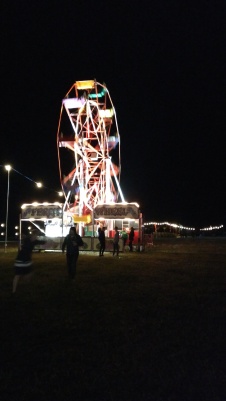
Here’s a couple of night shots from our first day wandering the grounds of Newquay’s Boardmasters festival. I’m still coming down with the Boardies blues from this one, amazing amazing week. The ferric wheel here was blaring house tunes with a desperately uncalibrated bass that physically vibrated the neurones in your brain as you passed. I took this photo in portrait initially as you can see from the pre-edit shot. I used the manual shooting option to tweak the ISO and shutter speed slightly to get enough detail from the shadows. The interface makes this really quick and simple, thankfully since my friends were fast off on their way to the Keg and Pasty! The camera does a really great job capturing the people pondering in the shadows with such little light. I think the slow shutter speed really works with this shot too, highlighting the motion of the wheel giving the illuminated colours of the seats a the chance to drift, distinguishing them from white light of the stall.
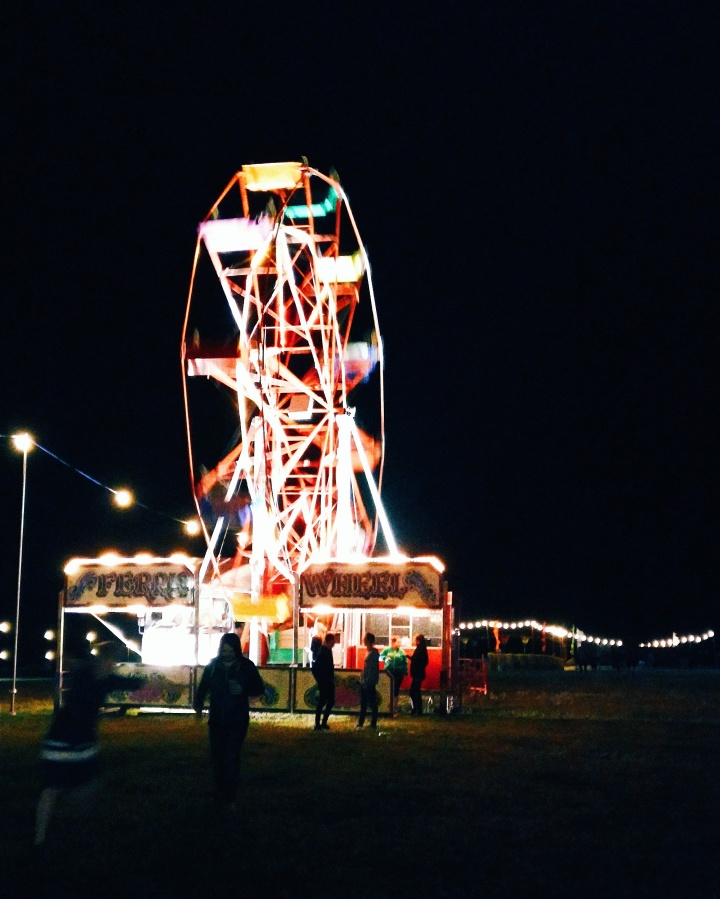
Moving over to the edit, this is where we can really have fun with the light this camera captures in the dark. We want to keep some detail on the stall below to keep the image interesting with the people bustling below, but also to make the wheel really come to life with some colour. Bringing up the shadows slightly then crushing them with contrast again nicely silhouettes the people against the ride, simultaneously deepening the black canvas of the Cornish night sky. The neon red skeleton of the wheel pops when some saturation is introduced bringing the structure to life. This comes out as a really great little image for a phone camera, considering the very minimal external lighting around to help illuminate the rest of the photo.
Morning – A Different Type of Low Light
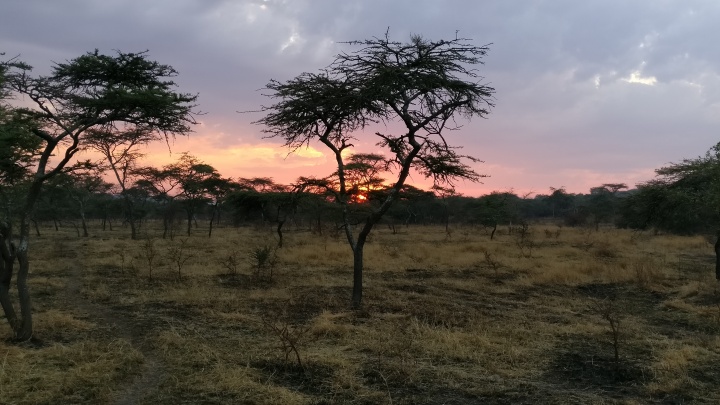
In contrast with the late nights spent living it up at festivals, we have the early morning sunrises across the Queen Elizabeth National Park. Fantastic in person, but a real task for our digital companions to see with much clarity. I left the phone to it’s own devices in auto for this one. I was very surprised by how well the camera had managed to reflect the colour pallet capturing the shades of pinks, oranges and yellows across the sky rather than blowing them all into one sunburnt mess. The clouds are well defined not being left in the shade by the distant sun’s exposure. Past the the focused tree in the centre, try not to avert your eyes to either which side, or you’ll find a strong case of the digital noise as the software attempts to guess where to sharpen the shadows. The tree tops are very soft, while the grass is tinted a greyey/green where the camera tries to find light. Overall this is a decent image capturing the rising sun, so long as you keep looking up away from the noise on the ground below.
So, What’s The Deal?
…I hear you ask after my lengthy excuse of an analysis of this here picture taking metal plate. I really, really like the camera on this phone. Pictures in every situation are detailed and punchy with superb colour. They scale up great to TVs or computers thanks to the high resolution, then look fantastic on the phones 1080p screen, wowing my pals who want to review their posey Instagram shots. People actually ask me to take photos on my phone and beam it over to them rather than on their own phones! That’s instead of using their iPhones, Samsungs, Nexus phones or plenty of other flagships that came out around the turn of 2016. I think that’s as good a review of the photos that come out of this device as any, especially when once again remind yourself of the budget price of this wannabe flagship. Thanks to the OnePlus 3, I am now employed full time as everyones personal photographer.

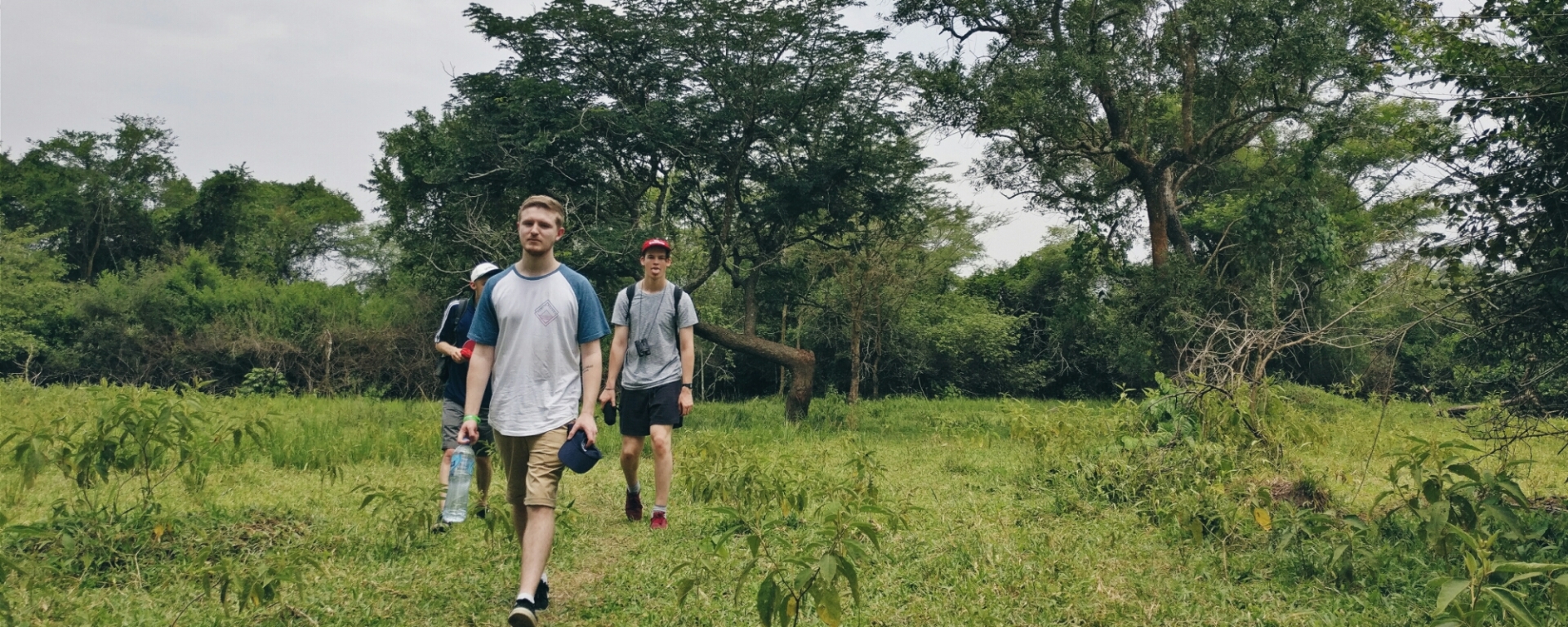
Great article! SS
LikeLiked by 1 person